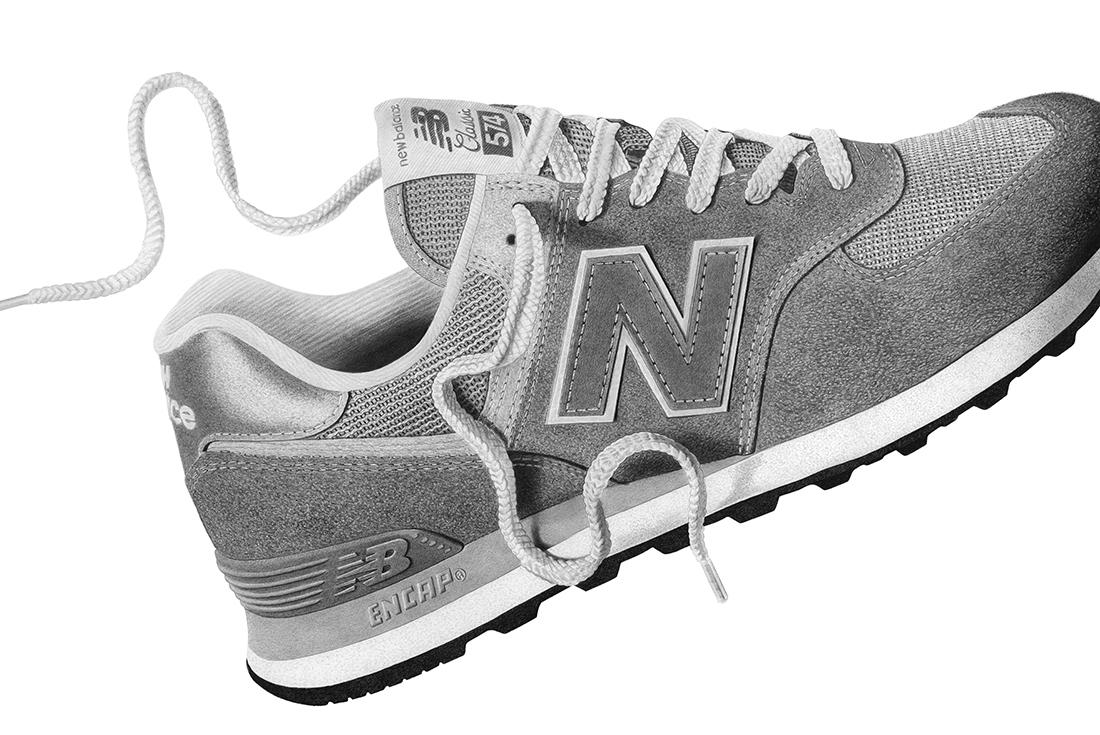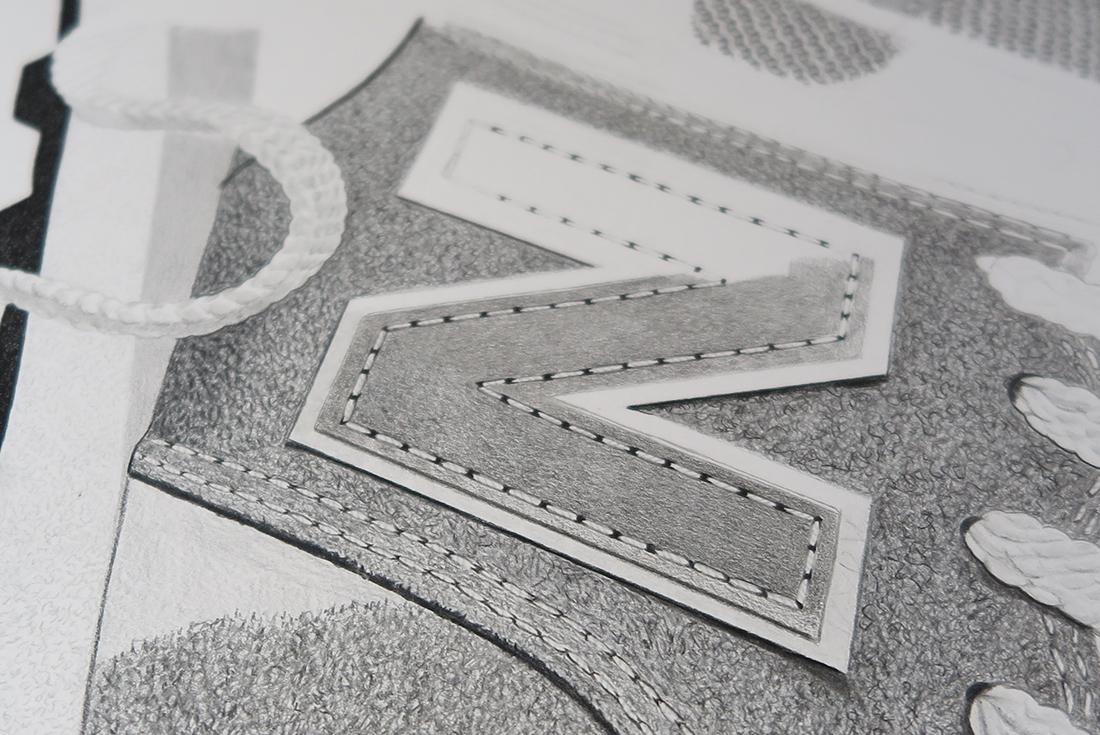Grey Matters: Steph Morris on Her NB574 Illustration
You’d be forgiven for thinking Steph Morris’ art was the result of pro-level Photoshop retouching, but her mind-bendingly detailed illustrations are lovingly crafted with Faber Castell greyleads. If there was one sneaker in the world born for Steph’s sketchbook, it’s the 574 — New Balance’s best-selling shoe of all time — in iconic grey-on-grey, of course. Steph was able to pencil in some time to chat with us about her creative process and the magnetic allure of graphite greyscale.




